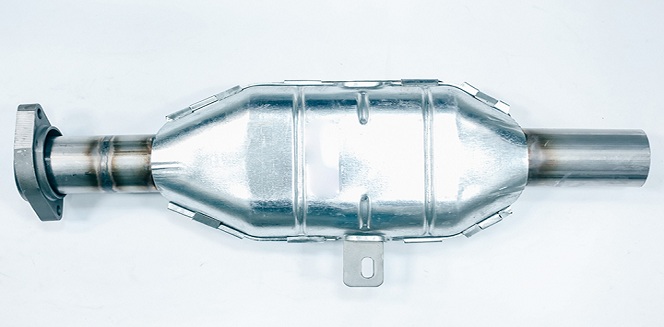Automobile Catalyst: Why It Is Irreplaceable and A Glance at New Opportunities

8 Nov
2019
For centuries, natural catalysts have helped initiate a chemical reaction. Catalysts are those compounds that trigger a chemical reaction without affecting itself. Scientists have leveraged their ability by using it in automobiles to minimize emissions of certain harmful compounds in the form of catalyst converter. What’s more, a catalyst converter breaks down hydrocarbons into carbon dioxide and water and converts nitrogen oxides back to nitrogen and oxygen.
For a vehicle’s internal combustion engine to perform, a controlled combustion reaction is vital. However, this very reaction is responsible for producing harmful burnt gases that increase air pollution. To remedy this conundrum, modern automobiles are equipped with device called catalytic converter that reduces harmful components in the car exhaust. An automotive catalyst controls emission of gases such as hydrocarbons, nitrogen oxides, and carbon oxides. Emission control regulations by government, rise in automobile production, and adoption of novel technologies such as nanotechnology in catalyst converter have boosted the demand for automotive catalysts. According to Allied Market Research, the automotive catalyst market is expected to garner $31.82 billion by 2025, registering a CAGR of 4.2% during the forecast period. In addition, the expensive metals including platinum, palladium, and rhodium have become vital for the manufacturing of efficient catalyst converters.
Why use automotive catalyst?
- Helps to increase noise while driving
Remove the catalytic converter from a vehicle and you might exceed around 110 decibels and the vehicle would unhealthy from a noise perspective. In fact, any noise above 85 decibels causes potential harm for one’s ears. For those who might feel this level of noise is not bothersome, the lack of noise control may interfere with conversations becomes annoying after a long drive surely.
- Increases fuel requirement
An automotive catalyst does more than just filtering out harmful gases. It helps the vehicle to offer a better fuel economy. Thus, removing a catalyst converter, one could reduce the vehicle’s miles/kilometers per gallon go down. On the other hand, the removal of catalyst converter increases vehicle’s horsepower but would come at a price. The vehicle would consume more oil to support the engine and in turn the cost of maintaining the car would also increase.
Apart from this, according to regulations set by the government, it is now against law to remove the automotive catalyst converter. In fact, Federal law in the United States prohibits catalyst converter’s removal if it is working properly and you would be subject to tremendous fines if the vehicle is found without the device. To comply with government’s regulations and reduce air pollution, several manufacturers have invested big bucks in developing most efficient catalyst converter. Recently, Volkswagen and US Elite Stanford University developed a fuel cell that can fight with the major challenge of usage of costly material such as platinum as an automobile catalyst. Moreover, Toyota had claimed to develop new catalyst that is smaller and uses 20% less precious metals while maintaining the vehicle’s performance up to its mark. Such developments and advent of nanotechnology are bound to open new opportunities in the near future.
Reference:
automotiveworld.com
mining.com
Â

Rosy Behera
Author's Bio- Rosy Behera holds a bachelor’s degree in Electrical and Electronics Engineering and now she is a content writer by profession. She loves to portray her thoughts and ideas with a nice command of words. Grabbing an audience with her creative write-ups is one of her biggest assets so far. Apart from writing, she is a certified “Odisi” dancer and has done Gardharva in Drawing, Painting, and Arts. She always explores new things through travel and is a big foodie.
Avenue: Entire Library membership of Allied Market Research Reports at your disposal
- Avenue is an innovative subscription-based online report database.
- Avail an online access to the entire library of syndicated reports on more than 2,000 niche industries and company profiles on more than 12,000 firms across 11 domains.
- A cost-effective model tailored for entrepreneurs, investors, and students & researchers at universities.
- Request customizations, suggest new reports, and avail analyst support as per your requirements.
- Get an access to the library of reports at any time from any device and anywhere.
Related Post
-
How are Submarine Cables Transforming Global Connectivity with Enhanced User Experience?
-
Endoscopy Procedures: Transformations in Techniques and Applications
-
AI-Powered Video Analytics: How the Product Actually Works for enterprises
-
Painting Robots: Transforming Precision Coating and Creative Applications
-
Innovations in Pharmacovigilance Systems Advancing Patient Safety
-
Understanding Edge Security: Keeping Data Safe Near the Source
-
Exploring the Use and Advancements of 3D Laser Scanners in Professional Applications
-
Reinforcing Industrial Controls with Smarter Tools and Training








